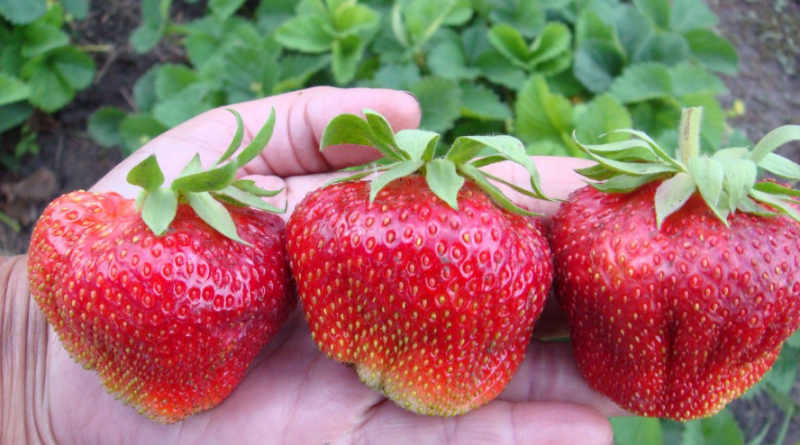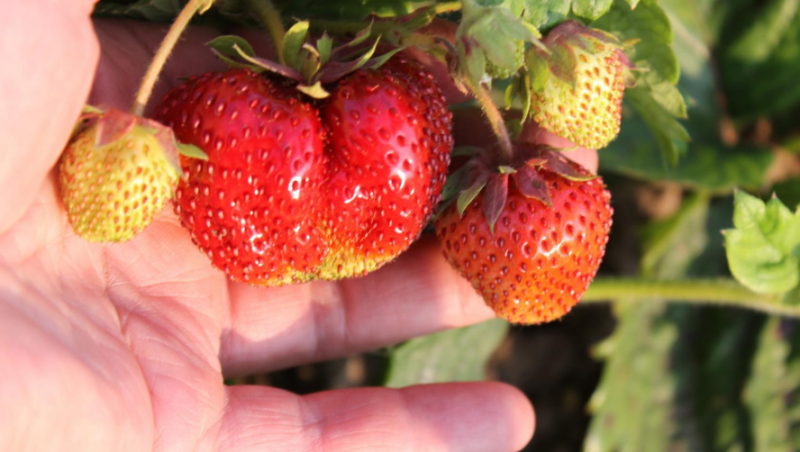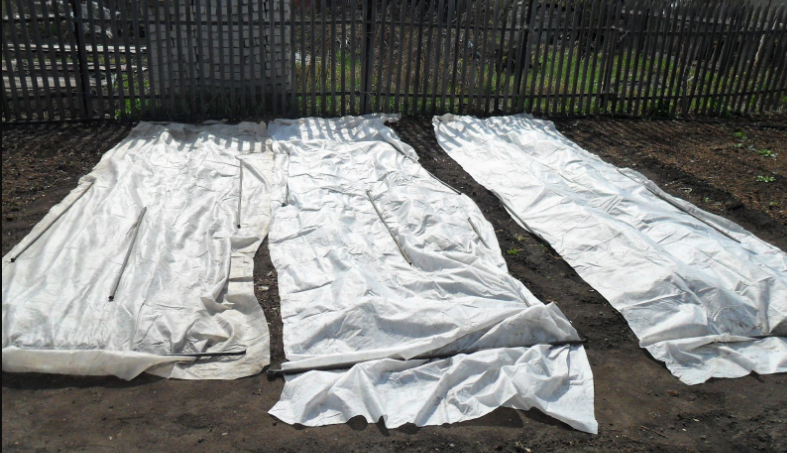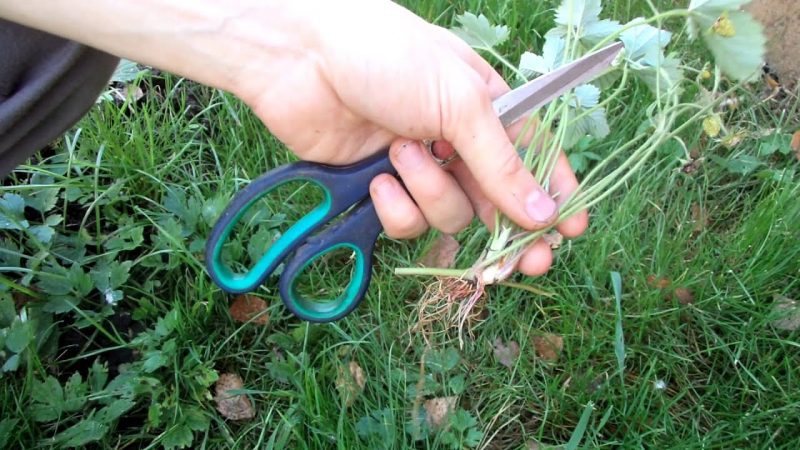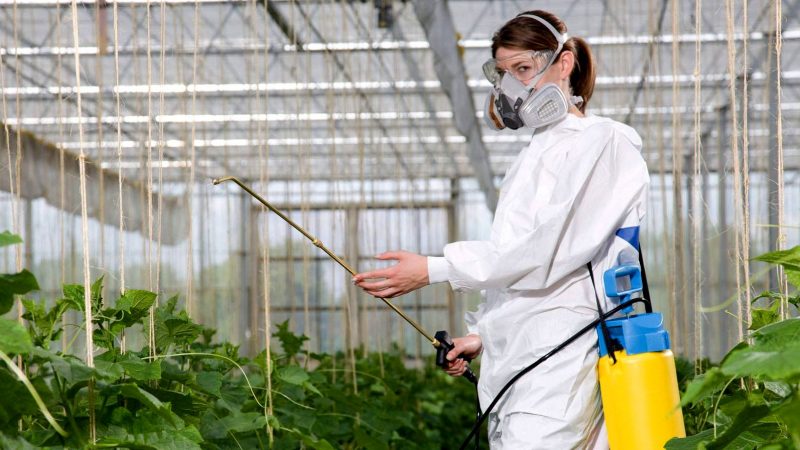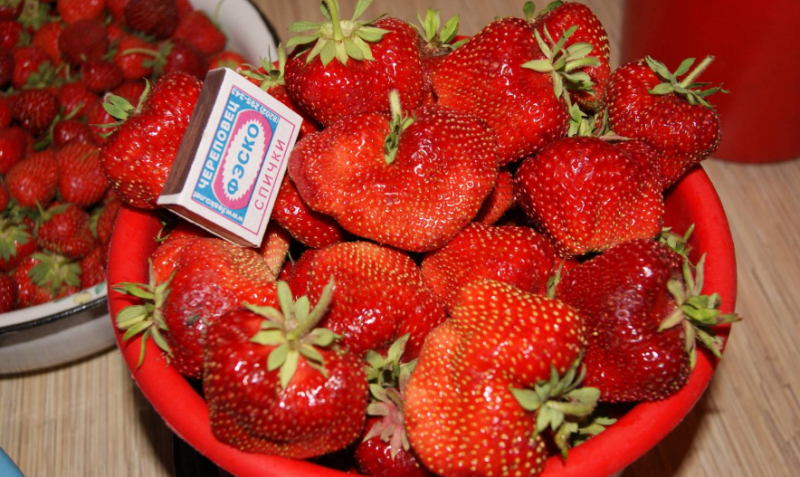Large-fruited varieties have always attracted and attract gardeners. Among the results of breeding work with giant berries stands strawberry "Chamorora Turusi". It will be discussed in an article with a detailed examination of the agrotechnical requirements for growing a Japanese beauty.
Material Content:
Description, features and productivity of the variety
Chamorora Turusi is a highly productive variety characterized by late fruiting. It is represented by fairly high bushes formed by powerful shoots that are covered with bright green, glossy leaves. Mustache is developing rapidly. In mid-June, among the green mass, berries begin to redden, reaching a mass of 150 g. As a rule, this is observed in the first year, when the plant forms only one peduncle. As they increase, the weight decreases to 100 g.
When fully ripened, the fruits are characterized by a dark red color, rich strawberry aroma, juicy and sweet white pulp. Since the latter is quite dense, the berries easily tolerate transportation. According to the description of the variety, subject to all agrotechnical requirements, it is possible to achieve a yield of 3 kg per bush.
On a note! Among the main features of the variety stands out a fairly large mass, which even in the absence of the required top dressing is 30 - 40 g, which is more than that of other varieties of garden strawberries.
Practical tips for growing
Despite the fact that the Japanese Chamora Turushi strawberry variety yields large yields even with some violations of the cultivation regulations, you should still heed the advice of experienced and professional gardeners. After all, then the yield can increase significantly.
- This is a long daylight variety that needs light for 14 hours. Therefore, it is recommended to run ranks from north to south.
- In order for the bushes to grow faster, the southwestern slopes should be reserved for the bookmark.
- For the northern regions, it is not recommended to postpone planting work in the fall, since strawberries may not have time to take root.
- To maintain appropriate soil moisture and not provoke the development of gray rot, it is worth giving preference to drip irrigation.
- To prevent the ingress of water to shoots during irrigation leading to the development of fungal colonies, it is worth stretching the “drop”.
In addition, to obtain high yields, all agrotechnical requirements for growing should be observed, which will be discussed in detail below.
Outdoor landing
When planting strawberries, attention should be paid to the following points:
- The choice of place. The Japanese variety needs good lighting and deep groundwater (at least 80 cm). Only in this case it is possible to collect the largest berries
- Requirements for the soil and its preparation. Strawberries develop well on fertile lands of a slightly acid reaction. If the soil is too acidic, it is calcified or acidified with high peat at high alkalinity.To increase fertility, two weeks before transplanting, the soil is enriched with the necessary macronutrients by adding 8 kg of rotted manure, 50 g of azofoska and 30 g of superphosphate per 1 sq. Km. m
- Dates. Depending on the agro-climatic conditions, planting can be carried out both in the second half of spring and in early autumn. But in the latter case, only on condition that the seedlings have time to take root.
- Landing scheme. Due to the growth of the bushes, the optimal distance between the specimens (both in the row and between them) is 50 cm.
- Technology. Wells are dug out on the site according to the specified scheme and filled with water. Next, seedlings are placed in the recesses, which are slightly pressed down and sprinkled with soil so that the heart is flush with the ground.
Direct landing is recommended in the evening or in cloudy weather.
How to care for the chamora turusi strawberries
Growing strawberries "Chamorora Turusi" provides for the implementation of a number of care activities.
- Watering. The Japanese variety loves moisture and needs frequent and plentiful watering. Frequency - every 3 to 4 days. The procedure is carried out in such a way that the soil under the bush is moistened to the depth of the arable layer (20 - 25 cm). In the first weeks after planting, it is recommended to irrigate the beds more often - every 2 days at the rate of ½ liter of water under the bush.
- Soil treatment. Strawberries need loose soil that can provide adequate levels of aeration and water permeability. For this, beds will need to be systematically loosened. At the same time, it is worth clearing the soil of weeds. To reduce the amount of watering, it is worth mulching trunks circles with sawdust.
- Top dressing. To make the berries as large as possible, bushes should be regularly fed.
Feeding is carried out in several stages:
- After the start of the growing season, plantings are fed with nitrogen. This is best done through manure, where it is contained in an accessible form, or ammonium nitrate. Urea may be used as an alternative.
- During budding, phosphorus is added to the soil with the addition of potassium.
- During the loading of fruits in the composition of top dressing, a large proportion should be potassium, which contributes to the formation of a quality crop.
You can buy fertilizers in any specialized store where the consultant will give the buyer answers to all questions.
Winter preparations
At the beginning of autumn, mustaches and leaf plates are trimmed. In the middle of the same season, the last watering is carried out.
After the first frosts, the plantings are covered with fir spruce branches, which will protect the strawberries from the winter cold. If the climate is mild, you can use a thick layer of mulch from sawdust.
Breeding methods
Japanese strawberries, like other varieties with a mustache, propagate either with the help of the latter or by dividing the bush.
- In the latter case, the most developed bushes are selected, which are removed from the soil in the spring and divided into several parts. At the same time, each dividend must have shoots and developed roots.
- In the first case, specimens with a well-developed mustache are selected, of which no more than three are left on the bush. They dig into the grooves, where they take root. When new outlets begin to form, the latter are separated from the mother plant and planted in a permanent place. The procedure is performed in early summer.
Protection against diseases and pests
Among the diseases that are noted at the plantings, gray rot, fusarium and verticillosis are distinguished. The most effective protective measures for treatment are fungicidal solutions - Fundazolum, Nitrofen and other analogues.
Malicious insects are no less dangerous. The most common of these are strawberry ticks and weevils. They are sprayed with insecticides.
On a note! It is not necessary to carry out processing with pesticides in the phase of formation and filling of berries, since a pesticidal residue may remain in the crop.
What problems can be encountered
When growing strawberries of the Chamorora Turusi variety, gardeners sometimes encounter such problems:
- fruit shredding - this is observed when planting in shaded places, the absence of top dressing and untimely transplantation (should be done every 6 years);
- the appearance of spots and drying of bushes - the reason is excessive watering, in which the development of rot begins;
- a small number of fruits - it is noted with excessive nitrogen fertilizing, as a result of which green mass develops to the detriment of the formation of the future crop.
The Chamorora Turusi variety is distinguished by its delicious and juicy fruits, which, with proper care of the crop, will surely please the gardener with their size and quantity.


